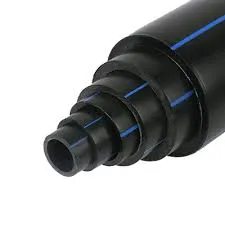Dec . 31, 2024 10:40 Back to list
hdpe water supply pipe
The Role of HDPE in Water Supply Pipes A Sustainable Solution
In the quest for sustainable water management, High-Density Polyethylene (HDPE) has emerged as a vital material for water supply pipes. With its unique properties and advantages over traditional materials, HDPE is revolutionizing the way municipalities and industries provide clean water to communities.
What is HDPE?
High-Density Polyethylene (HDPE) is a thermoplastic polymer made from petroleum, known for its high strength-to-density ratio. This material is extensively used in various applications, including packaging, textiles, and construction. When it comes to water supply systems, HDPE pipes offer a combination of durability, flexibility, and resistance to corrosion, making them an ideal choice for transporting water.
Advantages of HDPE Water Supply Pipes
1. Durability and Longevity HDPE pipes are highly resistant to environmental stresses such as soil movement and temperature fluctuations. Unlike traditional materials like concrete or metal, HDPE does not corrode, ensuring a longer lifespan for water supply systems. With an expected service life of over 50 years, these pipes offer a reliable solution for municipalities looking to minimize maintenance costs.
2. Flexibility One of the significant advantages of HDPE is its flexibility. This characteristic allows for easier installation, especially in challenging terrains. HDPE pipes can be coiled, reducing the need for joints and fittings, which often become weak points in water supply systems.
3. Leak-Free Joints HDPE pipes can be joined using fusion technology, ensuring leak-free connections. This method creates a homogeneous bond that eliminates the risk of leaks that can occur with traditional mechanical fittings. As a result, HDPE systems can maintain pressure and flow without risking water loss or contamination.
hdpe water supply pipe

4. Resistance to Chemicals HDPE is highly resistant to a wide range of chemicals, including chlorine, which is often used in water treatment processes. This property makes HDPE pipes suitable for transporting various types of water, including potable water, wastewater, and reclaimed water, without degrading their integrity.
5. Cost-Effectiveness Although the initial cost of installation may be higher than that of traditional materials, the long-term savings associated with reduced maintenance and replacement costs make HDPE an economically viable choice. Additionally, its lightweight nature simplifies transportation and handling, further cutting costs.
6. Environmental Benefits As society becomes more focused on sustainability, the environmental advantages of HDPE pipes cannot be overlooked. Made from recyclable materials, HDPE can be reprocessed at the end of its life cycle, contributing to a circular economy. Furthermore, its energy-efficient production process and long service life mean a smaller carbon footprint over time compared to conventional pipe materials.
Challenges and Considerations
While HDPE water supply pipes offer numerous advantages, there are also challenges to consider. The installation of HDPE requires specialized equipment and trained personnel to ensure that the fusion welding is performed correctly. Additionally, in extreme temperatures, HDPE can become brittle, necessitating careful consideration of the local climate during installation.
Conclusion
The adoption of HDPE in water supply systems represents a significant step towards more sustainable water management practices. With its numerous benefits, including durability, flexibility, and resistance to leaks and chemicals, HDPE has proven itself to be a reliable choice for municipalities and industries alike. As the demand for clean and accessible water continues to grow, investing in HDPE technology can help ensure that communities are equipped with efficient and sustainable water supply systems for generations to come.
In summary, HDPE water supply pipes not only address the immediate needs of water transportation but also contribute towards a greener and more sustainable future. Embracing this innovative material is essential for enhancing the resilience of infrastructure and optimizing water resource management in an increasingly demanding world.
-
Durable PP Rigid Sheet: Lightweight, Chemical Resistant Solutions
NewsAug.21,2025
-
PVC Grey Sheet for Extraction: Chemical Resistant & Durable
NewsAug.19,2025
-
Durable PVC Pipe Fittings for Plumbing & Irrigation Needs
NewsAug.18,2025
-
HDPE Steel Belt Reinforced Spiral Corrugated Pipe | High Strength
NewsAug.17,2025
-
HDPE Pipe Fittings: Durable, Leak-Proof Solutions
NewsAug.16,2025
-
Premium CPVC Sheet: High-Temp & Chemical Resistant Solutions
NewsAug.15,2025

